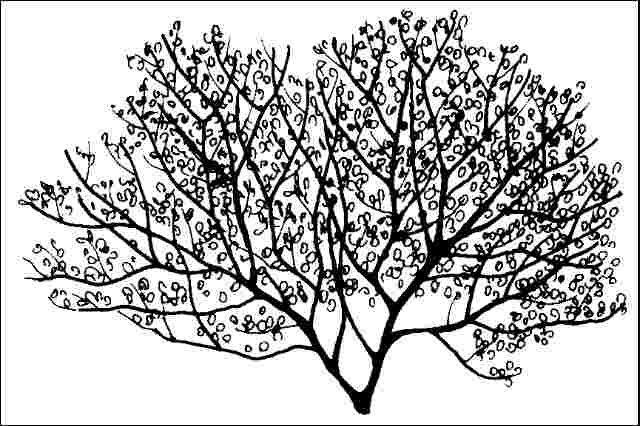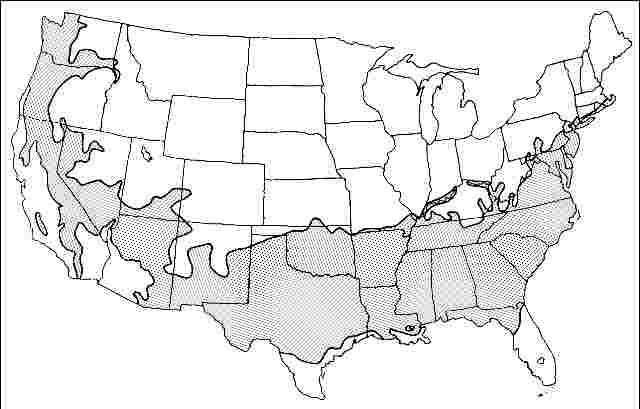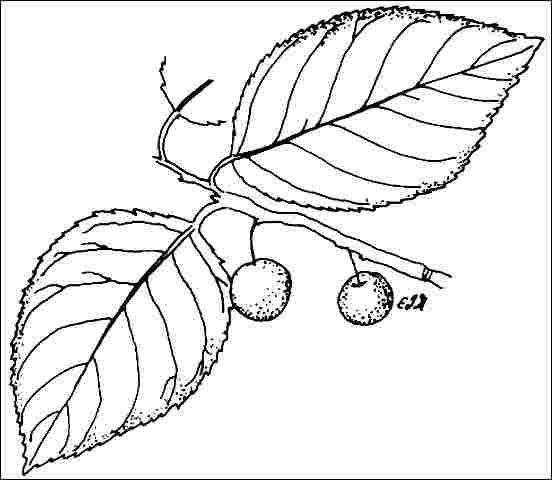Introduction
Growing 25 to 30 feet tall with a spread of 25 feet, Mexican Plum is a North American native tree which forms an irregular canopy composed of yellow/green, shiny leaves with fuzzy undersides and thorny branches. In spring, the trees are smothered with fragrant, white blooms which are followed by purple/red, juicy fruits. These tart fruits can be used to make jams and jellies. The blooms help make Mexican Plum ideal for use as a specimen tree but it also fits in nicely in the naturalized landscape as an understory tree. The gray/black, ridged and furrowed bark is quite attractive, and the deciduous leaves turn a showy orange color in fall before dropping.

General Information
Scientific name: Prunus mexicana
Pronunciation: PROO-nus meck-sih-KAY-nuh
Common name(s): Mexican Plum
Family: Rosaceae
USDA hardiness zones: 6B through 8B (Fig. 2)
Origin: native to North America
Invasive potential: little invasive potential
Uses: container or planter; deck or patio; specimen; highway median
Availability: somewhat available, may have to go out of the region to find the tree

Description
Height: 25 to 30 feet
Spread: 20 to 25 feet
Crown uniformity: irregular
Crown shape: round
Crown density: open
Growth rate: slow
Texture: medium
Foliage
Leaf arrangement: alternate (Fig. 3)
Leaf type: simple
Leaf margin: serrate
Leaf shape: ovate, elliptic (oval), obovate
Leaf venation: pinnate
Leaf type and persistence: deciduous
Leaf blade length: 2 to 4 inches
Leaf color: green
Fall color: orange
Fall characteristic: showy

Flower
Flower color: white/cream/gray
Flower characteristics: showy
Fruit
Fruit shape: round
Fruit length: 1 to 3 inches
Fruit covering: fleshy
Fruit color: red, purple
Fruit characteristics: attracts birds; showy; fruit/leaves a litter problem
Trunk and Branches
Trunk/bark/branches: branches don't droop; not showy; typically multi-trunked; no thorns
Pruning requirement: little required
Breakage: resistant
Current year twig color: gray, brown
Current year twig thickness: thin
Wood specific gravity: unknown
Culture
Light requirement: full sun
Soil tolerances: clay; sand; loam; alkaline; acidic; well-drained
Drought tolerance: moderate
Aerosol salt tolerance: unknown
Other
Roots: not a problem
Winter interest: no
Outstanding tree: no
Ozone sensitivity: sensitive
Verticillium wilt susceptibility: susceptible
Pest resistance: resistant to pests/diseases
Use and Management
This small tree is well suited for residential landscapes. It might be best to locate the tree back from the edge of a patio, deck or walk since the fruits can be a little messy for a short period in the summer or early fall. When planted in the lawn or in a bed of low-growing ground cover, fruits drop unnoticed and are of no concern. The tree can be a `show stopper' when it is in bloom. It makes a nice tree for planting near power lines due to its small size.
Mexican Plum should be grown in full sun or partial shade on well-drained, rich soil but will tolerate almost any soil. It is quite drought-tolerant once established.
Pests or Diseases
None of major concern.